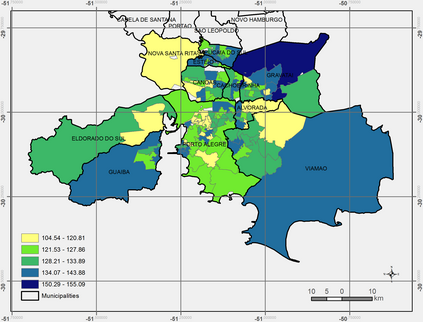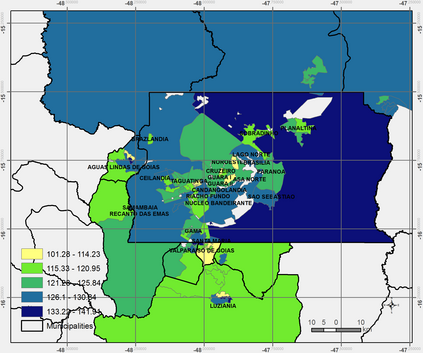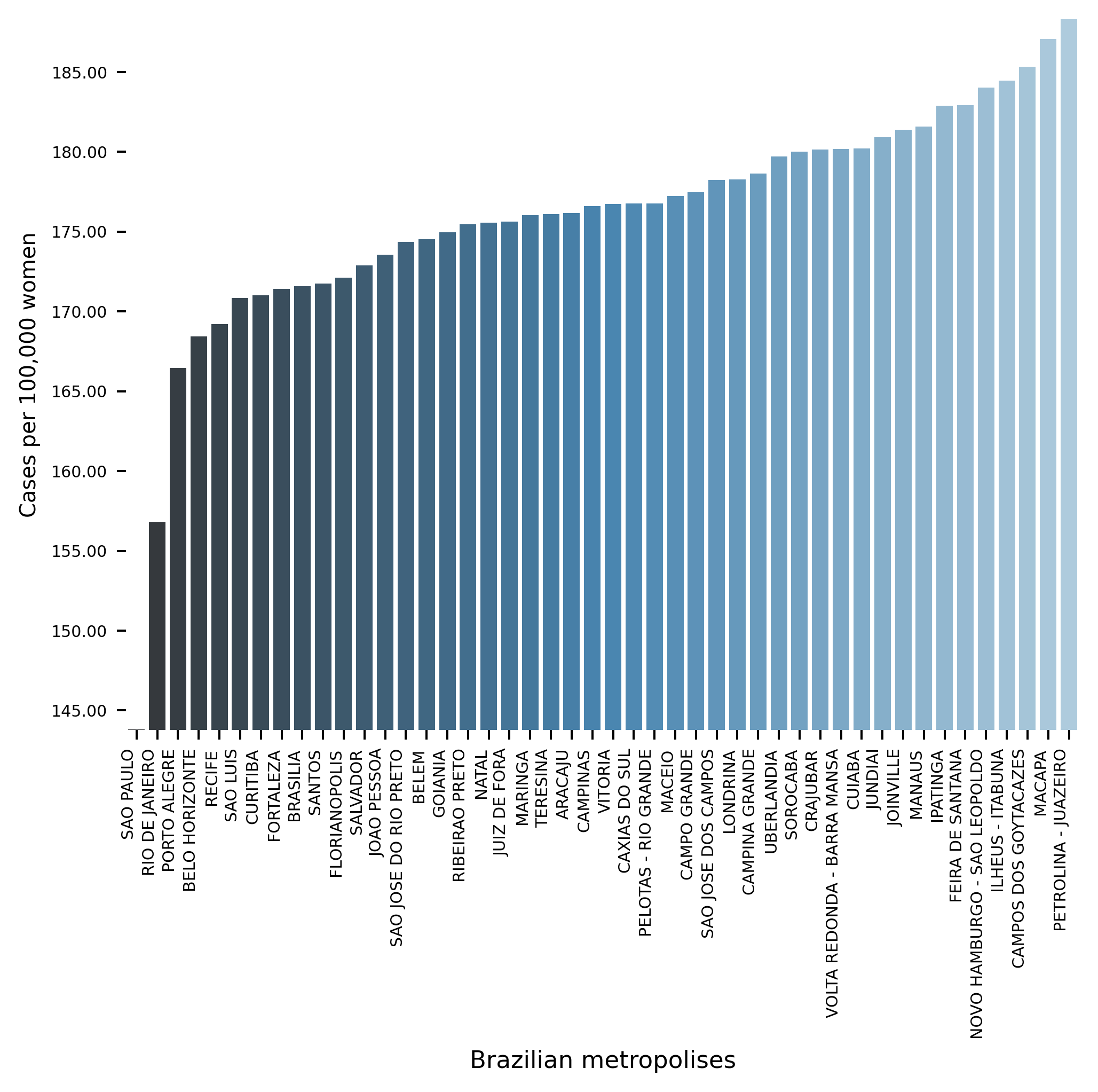Violence against women occurs predominantly in the family and domestic context. The COVID-19 pandemic led Brazil to recommend and, at times, impose social distancing, with the partial closure of economic activities, schools, and restrictions on events and public services. Preliminary evidence shows that intense coexistence increases domestic violence, while social distancing measures may have prevented access to public services and networks, information, and help. We propose an agent-based model (ABM), called VIDA, to illustrate and examine multi-causal factors that influence events that generate violence. A central part of the model is the multi-causal stress indicator, created as a probability trigger of domestic violence occurring within the family environment. Two experimental design tests were performed: (a) absence or presence of the deterrence system of domestic violence against women and (b) measures to increase social distancing. VIDA presents comparative results for metropolitan regions and neighbourhoods considered in the experiments. Results suggest that social distancing measures, particularly those encouraging staying at home, may have increased domestic violence against women by about 10%. VIDA suggests further that more populated areas have comparatively fewer cases per hundred thousand women than less populous capitals or rural areas of urban concentrations. This paper contributes to the literature by formalising, to the best of our knowledge, the first model of domestic violence through agent-based modelling, using empirical detailed socioeconomic, demographic, educational, gender, and race data at the intraurban level (census sectors).
翻译:家庭暴力主要发生在家庭和家庭中。COVID-19大流行导致巴西建议并有时强加社会分化,部分关闭经济活动、学校、限制事件和公共服务,初步证据表明,密集共存增加了家庭暴力,而社会分化措施可能阻止人们利用公共服务和网络、信息和帮助。我们提议了一个以代理为基础的模式(ABM),称为VIDA,以说明和审查影响暴力产生事件的多因因素。该模式的核心部分是多因果压力指标,作为家庭暴力在家庭环境中发生的概率诱发因素。进行了两次试验性设计测试:(a)缺乏或存在对妇女的家庭暴力威慑系统,以及(b)增加社会分化的措施。VIDA介绍了实验中考虑的都市地区和居民区的比较结果。结果显示,社会分化措施,特别是鼓励留在家中的措施,可能使对妇女的家庭暴力增加约10%。VIDA还进一步表明,人口密集地区每100 000名妇女的病例相对较少,这是在家庭环境中发生的家庭暴力的触发因素。进行了两次试验性设计测试:(a) 缺乏或存在对妇女的家庭暴力的威慑制度,以及(b) 增加社会分层数据,这是通过城市人口统计学的模型,通过城市人口统计学的模型,对城市人口结构进行了分析。








